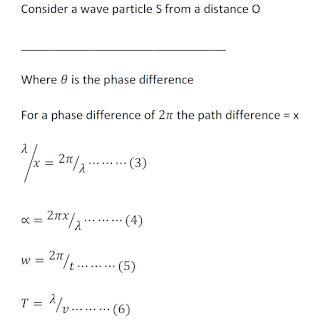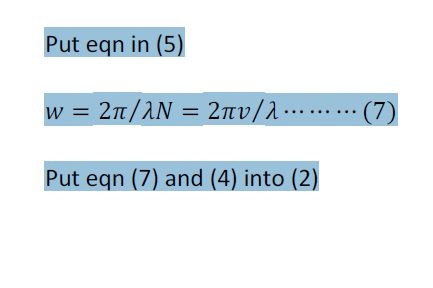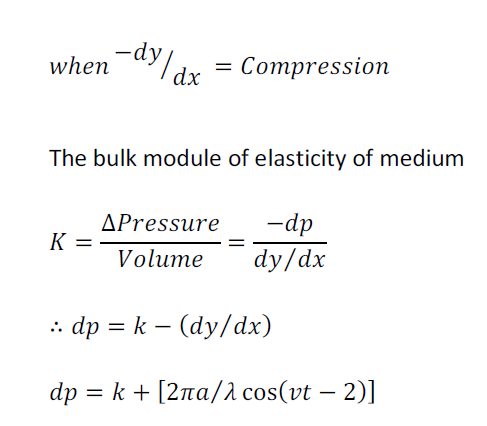OPTICS
Newton corpuscular theory- consider light as a stream of particles from the sun or candle
Newton considered that light can be transmitted via transparent material
This corpuscular theory explains why angle of incidence and reflection are sharp
HUYGEN’S WAVE THEORY
Huygen a contemporary took a different look of light and thought light as a wave and as a
wave motion. Therefore behave like winkles of water. Therefore has ability to pass through one
another. This wave motion of light explains reflection and refraction of light.
He also assumed that the path taken by wave causes sensation of vision
= 2πx
λ
γ = A sin 2 πx ……………………………………. (2)
λ
2πx = k
Λ
γ = A sin kx ……………………………………. (3)
from equation (2) we can have
γ = A sin wt
γ = A sin 2 πt/T
WAVE LENGTH OF LIGHT
-----------------------------------------------
Light waves - look at a ray
-----------------------------------------------
Reflection on at a plane mirror
-----------------------------------------------
1STlaw of reflection
2ndlaw - The angle of incidence I, the angle of reflection r and the normal all lie on the same
plane
-----------------------------------------------
SPECULAR AND DIFFUSE REFLECTION
This type of reflection occurs on spherical or plane mirror. The energy of the incident ray is
confined to one direction on reflection or after reflection. On the other hand, energy of incident
ray which is confined to one direction may be reflected in an irregular or different direction after
leaving the spherical surface of the mirror.
Deflection of incident ray from a spherical surface or a mirror depends on the particulate nature
of the material. Again it should be noted in most cases, the incident ray penetrates into the
material before being reflected or refracted and then emerges from that material if it is a
transparent material.
-----------------------------------------------
Placing two mirrors perpendicular to each other
-----------------------------------------------
REFLECTION AT A SPHERICAL MIRROR
-----------------------------------------------
A spherical mirror is a section of imaginery square sphere of radius, R centre of curvature C.
They are classified as either concave or convex depending on the surface that is metalised. The
principal axis on the concave or convex mirror is the line that passes through the centre of
curvature ‘c’.
PARADOXIAL OR GUASSIAN OPTICS
Paradoxial or Guassian optic is that that consider only rays that are inclined to less than 100 to
the principal axis. The presence of wide angle rays generate caustic curve (like the surface of the
coffea)
Rules for image formation
(1)
In a concave mirror all parallel ray passes through principal focus F (where F is the principal
focus) distance of the focal length is equal to half of the centre of curvature. A convex mirror all
reflected rays appears to emerge from the principal focus.
(2) All rays move along the normal from the centre of curvature moves along the normal at the
point of incidence
(3) It is sometimes applied (IR law) i.e incident-reflection laws applied to the vertex
-----------------------------------------------
ACTERING OBJECT DISTANCE-CONVEX MIRROR
LATERAL MAGNIFICATION
Image height vary with object position in other words mirror magnifies
-----------------------------------------------
Lateral magnification (m) = image height
Object height where m> 1
An alternative to drawing of ray diagram for determination of image position is to use
mathematical approach 1/s + 1/s-1 = 1/f
S= object distance S1 = Image distance f= focal length
SS1 and f must be measured from the vertex position of mirror
N/B = (i) Distance measured to the left of the vertex is positive
(ii) Focal length is positive in concave mirror because it is measured to the right of the mirror
DQMC = QM = h ……………………………. (1)
MC (S-R)
ΔQIMIC = QIMI = -h/R-S (Radian) ……………… (2)
CMI
Using similar triangle
-hI/R-SI = -h/S – R
-hI/h = R-SI/S- R ………………………………… (3)
Considering VPF = h/f…………………………………. (4)
Q1M1F = -h/S1.f ………………………………………….. (5)
h/f = -h1/s1.f
-h/h = s1-f/f ………………………………………… (6)
Equating equation (3) and (6)
S1-f/f = R-S1/S-K
I/f = R- S1 (s-k) (S1 –f)
Straight line property of light
Reflection on a plane surface
-----------------------------------------------
Set of lines are drawn to coincide at 0 on a sheet of paper and with a flat surface of a semi
circular block place on a sheet of paper (with the mid point coincide with 0). Light from a ray
box of a low power laser is now directed along the line drawn in turns while noting the angle of
incidence.
As you continue to increase the angle of incidence, you get to a stage where the emergent beam
along the radius which is normal to the surface at the point of emergent. Except experimental
error, it will show that
Sin A = Constant for all angles between 0 and 900
Sin B
It can also be shown that refractive index lies only in the plane of incident i.e the plane
containing the incident ray and normal at the point of incident.
Refractive index
Refractive index of a medium e.g glass is 1.00 which is slightly different from the speed of light
in vacuum.

The refractive index of air 1.003 which is slightly different from vacuum.
Snell’s law of refraction
Na sina =nb sin b
Where a and b is the angle that the ray make with the normal to the plane boundary separating
the two medium A and B
Sin a = Real depth
Sin b Apparent depth
(2)The incident ray, refracted ray and the normal at point of incident all lie on the same plane
Sin a =nb ………………… (1)
Sinb
Sin a = nb sin b ……………. (2)
nb sin b= nc………………….. (3)
sin c
nb sin b = ncsinc ………… (4)
nd sin d= n e sin nd sin d= e
sin e
nc sin c = D nc sin c= nd sin d……………….(5)
sin d
Put equation 4 in 2
Sin C = nc sin c ……………. (7)
Sin a = ne sin e put 7 in
Sin a = nd sin d…………… (8)
Put 8 in
Sin a ne sin e
Sin a = Nm= na
M1……………………………. (1)
Sin b = Nm = nb
M0………………………….. (2)
-----------------------------------------------
Tan a= Nm ……………………. (1)
N1
Tan b= Nm ……………………. (2)
N0
Nm x N0 = N0 = Real depth = n
M0 N1N1 Apparent depth








No comments:
Post a Comment